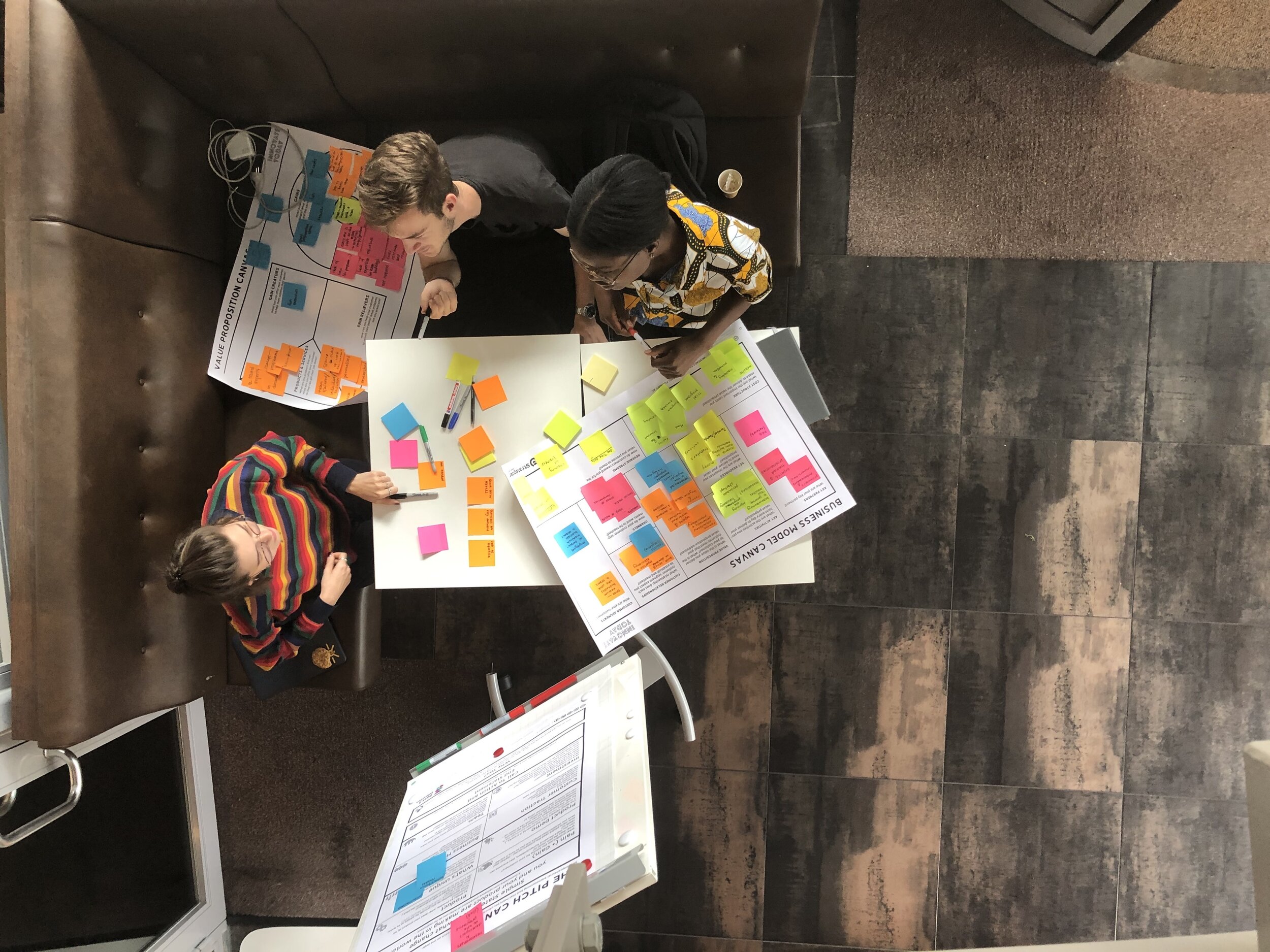How can you make sure your idea works? There are many methods, but in this article, we will explain the Lean Startup methodology, which teaches you how to drive a startup, when to turn, when to persist and grow a business with maximum acceleration.
One of the founding fathers of this concept is Eric Ries.
As an entrepreneur, he experienced firsthand the drawbacks of the traditional process with his first company. During his second chance, as a co-founder of software company IMVU, he and his team tried a different approach by rapidly creating and releasing their product before it was perfected, only to continuously update, revise and re-release it, based in part on customer feedback.
This experience and his findings built the famous and successful book “The Lean Startup” which helps startups create order and avoid chaos by providing tools to test a vision continuously. If you would like to apply this method, follow the next steps.
VALIDATE YOUR PRODUCT/SERVICE
Many startups begin functioning with a product idea they think people want. No market research, no testing and some of them spend months or even years perfecting a product based on their own beliefs, without even showing the idea to prospective customers. Therefore, some startups receive nothing but indifference when communicating or launching their final product and this is certainly not helpful to new businesses. Keep in mind that deep market research and a good validation of the idea will help you to develop a better product that solves needs.
ELIMINATE UNCERTAINTY
"Just do it" is an approach that avoids all forms of managing. The lack of structure could lead many startups to abandon all processes. Using the Lean Startup approach, startups can create order and avoid chaos by providing tools to test a vision continuously. It is not simply about spending less money or failing fast, it is about having a process, a methodology around the development of a product/service to build it the best way possible.
WORK SMARTER NOT HARDER
Products are experiments.
“Every action you take in product development, in marketing, every conversation you have, everything you do is an experiment”
Should this product be built? Can we build a sustainable business around this set of products and services? This assessment is more than just a hypothetical checkup; it is actually what we would define as a first product. If it is successful, it allows you to get started with a campaign, for instance, enlisting early adopters and adding people to the team and eventually starting to build a product. By the time the product is ready to be launched, it will already have established a proven customer base. It will have solved real problems and offer detailed specifications.
FIGURE OUT THE PROBLEM, GIVE A SOLUTION AND CREATE THE MVP
One of the essential components of “Lean Startup” is the build-measure-learn feedback loop. The first step has as objective, to figure out the problem that you must solve and then develop a minimum viable product (MVP) to begin the process of learning. Once this MVP is established, you need to measure the impact and results and learn. Remember to include metrics that can validate the question you asked before.
As a startup, you can also use an exploratory development method called "Five Whys", which refers to ask simple questions to study and solve problems along the way. When this process of measuring and learning has been done properly, it will be clear if the startup is moving the drivers of the business model or not. If not, you have the perfect sign to define if it is the time for pivot or to make a correction in order to test a new hypothesis, strategy, and engine of growth.
VALIDATED LEARNING
The Lean Startup method can help you with metrics and progress to prove your idea works with a solid foundation, which helps a lot when you want to get funded and you are in need of evolution. Once entrepreneurs embrace validated learning, the development process can be substantially more efficient.
That said, when you focus on the right thing to build, based on what customers want and will pay for, you do not need to spend months waiting for a product to change the company's direction. Instead, as an entrepreneur, you can adapt the plans along the way.
Some examples of successful companies using the lean startup method
DROPBOX
Dropbox is one of the best-known examples of a business that has grown using lean startup principles.
The file transfer service now has over 500 million users worldwide but it started life as a minimal viable product in the form of a 3-minute screencast showing consumers what Dropbox could do. Response to the video enabled Dropbox to test if there was a demand for the product and, at the same time, capture an initial audience through a waiting list. Comments on the video provided high-value feedback.
ZAPPOS
When Zappos started out in 1999, founder, Nick Swinmurn, didn’t know if customers were ready to buy shoes online. Swinmurn approached local shoe stores, took pictures of their inventory and posted the pictures online on a basic website. If he received an order, he’d buy the shoes from the stores at full price and then sent them directly to customers. Swinmurn soon proved that customer demand was present and Zappos would eventually grow into a billion-dollar business based on the model of selling shoes online.
PEERBY
A good Dutch example of a company using the lean startup method to build up their business is Peerby. Founder Daan Weddepohl came up fast in 2012 with his peer-to-peer platform for household items. After refusing an offer of 16 million to sell his company problems started piling up for him. With trial and error and The Lean Startup by Eric Ries in his hand, he managed to turn things around for Peerby. Now the company is showing the hockeystick growth you want to have as a fast scaling company and they are back on track for rapid expansion. Weddepohl has since published a book about his experiences.
Want to learn more about The Lean Startup method and about ways to finance and grow your startup? Register for the free introduction day of Present Your Startup Alkmaar on February 13th!
References & further reading
Muckersie, E. (2016, September 8). 3 EXAMPLES OF LEAN STARTUP IN ACTION. Retrieved January 28, 2020, from Decidedly: https://decidedly.com/3-examples-of-lean-startup/
The Lean Startup. (n.d.). METHODOLOGY. Retrieved from The Lean Startup: http://theleanstartup.com/principles
Wharton University of Pennsylvania. (2011, November 22). Eric Ries on ‘The Lean Startup’. Retrieved from Wharton University of Pennsylvania: https://knowledge.wharton.upenn.edu/article/eric-ries-on-the-lean-startup/
Luimstra, Jelmer (2019, September 20). ‘Boek over Peerby leest als achtbaan aan overwonnen failures’, in: Sprout. Retrieved from: https://www.sprout.nl/artikel/boeken/boek-over-peerby-leest-als-achtbaan-aan-overwonnen-failures
Written by Claudia Flores and Steven Pango



